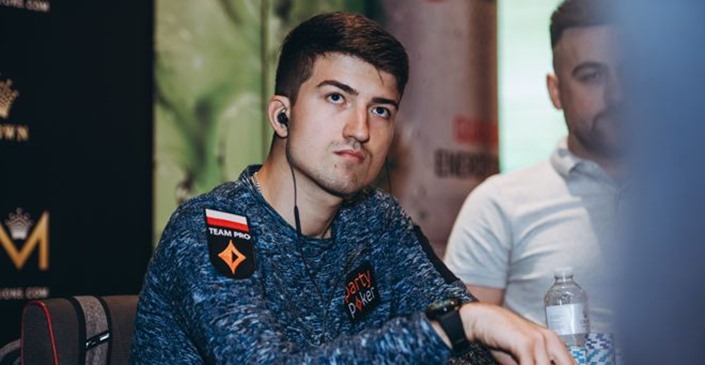Over nearly 50 years, the Main Event at the World Series of Poker has witnessed extraordinary dramas and created huge stars. The Paul Phua Poker School picks the top 10 events you really need to know
How did the poker tournament expression “a chip and a chair” come about? Why is 10-2 known as “the Doyle Brunson”? Where did the poker movie Rounders get its final hand? How did Phil Hellmuth become famous at 24? In what way did the WSOP’s 2003 live tournament change the face of internet poker? All is revealed below. If only history lessons at school had been this fun…
1970-1: The World Series of Poker is born
The very first World Series of Poker was not even a tournament: the pros were simply asked to elect the man they thought was the best player. Legend has it that at first they all voted for themselves, so a winner was only announced after they were told to name the second best player! That man was Johnny Moss, and the very next year, when a tournament structure was introduced to the WSOP, Moss proved the vote right by winning fair and square. He went on to be known as “The Grand Old Man of Poker”. Read more
1976-1977: How the “Doyle Brunson hand” got its name
There are lucky hands, and then there is the “Doyle Brunson hand” – a hand so ridiculously lucky that it forever more bears the name of the man who played it. Aged 83, Doyle “Texas Dolly” Brunson has now won 10 WSOP bracelets, but none more spectacularly than his two back-to-back Main Event wins. Holding just 10-2, he made a house to knock out his heads-up opponent Jesse Alto in 1976. Incredibly, the very next year he again made a house with 10-2 to knock out Gary “Bones” Berland. Read more
1982: Jack Straus and the original “chip and a chair”
You may have heard the poker expression, “as long as you’ve got a chip and a chair…” It means that no matter how few chips you are left with in a poker tournament, you always have a chance. But you may not know that this saying was born at the World Series of Poker in 1982. The story of how Jack “Treetop” Straus recovered from a single chip to win the Main Event and $520,000 is not just the greatest underdog story in poker, but possibly in any sport. Read more
1988: Johnny Chan retains his WSOP title with the “Rounders” hand
Johnny Chan, nicknamed “The Orient Express” for the speed with which he demolished his opponents, was one of the finest players of the 1980s. Not content with winning the World Series of Poker Main Event in 1987, he repeated the feat with a back-to-back championship title in 1988. And he did it with a trap so well laid that this final hand against Erik Seidel was immortalised in the poker movie Rounders… Read more
1989: Phil Hellmuth becomes the youngest ever WSOP champion
Johnny Chan nearly pulled off the historic feat of a WSOP Main Event hat-trick. For a third year in a row, he found himself heads-up after defeating all comers. Even better, he was up against some inexperienced young kid of 24. Unluckily for him, that young man just happened to be Phil Hellmuth, and he was so focused on winning that he’d left a message on his answerphone saying, “You’re talking to the 1989 world champion of poker”. This was the WSOP that propelled “the Poker Brat” to fame. Read more
1995: Barbara Enright is the first woman to reach the WSOP final table
When asked to name a female poker pro, you might immediately think of Annie Duke, Vanessa Selbst, or Liv Boeree. But to players of an older generation, Barbara Enright’s name would roll first off the tongue. As the first (and still only) woman to reach the final table of the WSOP, she paved the way for future female players in what is still a very male-dominated environment. And she would have done better than fifth place, too, if it wasn’t for a painful bad beat… Read more
1997: Stu Ungar wins a historic third WSOP Main Event
Ask any poker player who was the greatest of all time, and there’s a good chance they’ll say Stu Ungar. With a photographic memory that got him banned from blackjack tables, and poker reads so acute he once won a $50,000 WSOP heads-up event by calling with 10-high, Stu “The Kid” Ungar was one of the greatest natural talents ever. But after winning the world championship in 1980 and 1981, he fell prey to drug addiction. His extraordinary story was to have a triumphant conclusion at the 1997 World Series of Poker… Read more
2003: Chris Moneymaker launches the internet poker boom
Was there ever a poker player more aptly named than Chris Moneymaker? In 2003, the accountant and amateur poker player turned a $39 entry to an online satellite tournament into $2.5 million when he won the WSOP Main Event. His victory was the personification of the American Dream that anyone can make it big, and inspired a whole generation of online poker players. Over the next three years, entries to the WSOP Main Event increased tenfold. Read more
2007: Annette Obrestadt becomes the youngest WSOP bracelet winner
Annette Obrestadt was a few days short of her 19th birthday when she won the World Series of Poker Europe, in the WSOP’s first official bracelet tournament outside America. She was young; she was a woman; she was part of a new breed of aggressive online players who would change the face of poker strategy. Annette Obrestadt once won an online poker tournament playing “blind”, with her cards covered up – but she would need all her resources to triumph over the WSOPE Main Event… Read more
2012: Antonio Esfandiari wins $18m in the Big One for One Drop
The Main Event of the World Series of Poker has traditionally awarded the biggest first prize of all poker tournaments. But a side-event of the WSOP, first held in 2012, dwarfed even these sums. This was the Big One for One Drop, in aid of the water charity set up by the founder of Cirque du Soleil, and the first prize was a record $18 million. Antonio Esfandiari, a former magician, pulled off the greatest trick of his career: making a final table that included Phil Hellmuth, Brian Rast and Sam Trickett disappear. Read more
















